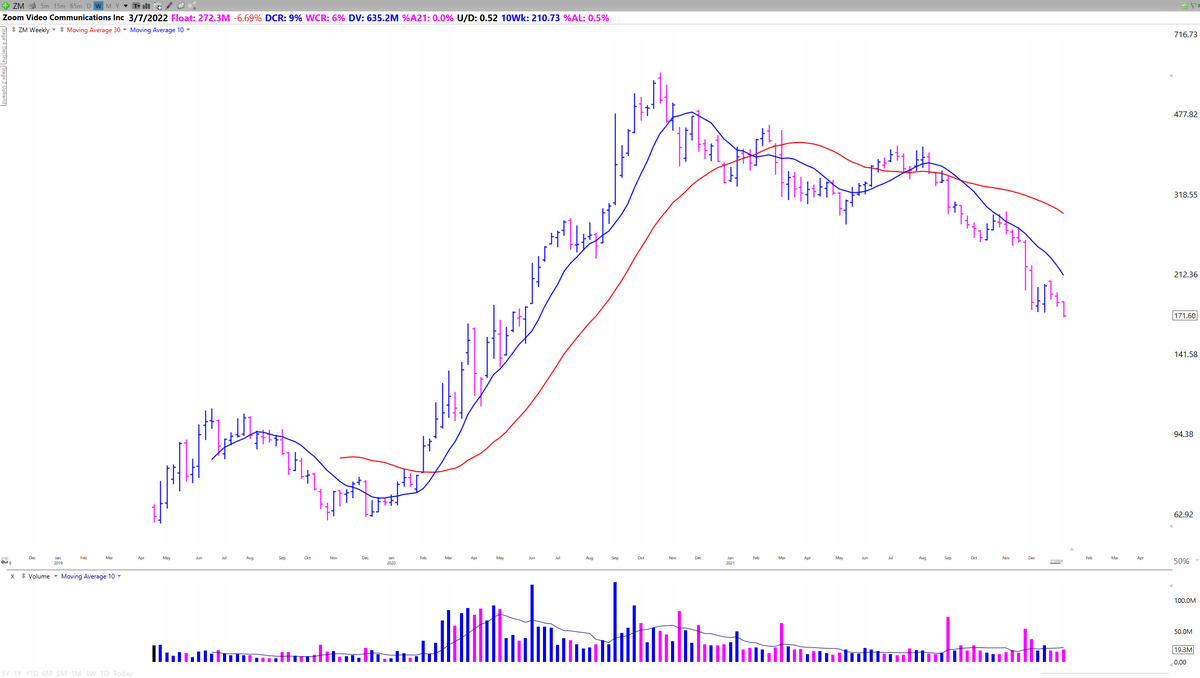In one sentence showing RS means outperforming other stocks both during market uptrends and downtrends.
What is Relative Strength (RS) and how to identify it (Thread)
In one sentence showing RS means outperforming other stocks both during market uptrends and downtrends.
If you want to outperform the indexes, logic says you have to be invested in stocks doing the same.
RS Rating: @IBDinvestors Proprietary measure of RS scored 1-99. Stocks with an RS rating of 80 have outperformed 80% of stocks over the past year.
RS Line: The Line plotted by dividing each day’s stock price/ price of the SPX.

-Note RSI (Relative strength index) is something completely unrelated to the concept of this thread.
RS rating: 7, decreasing RS line
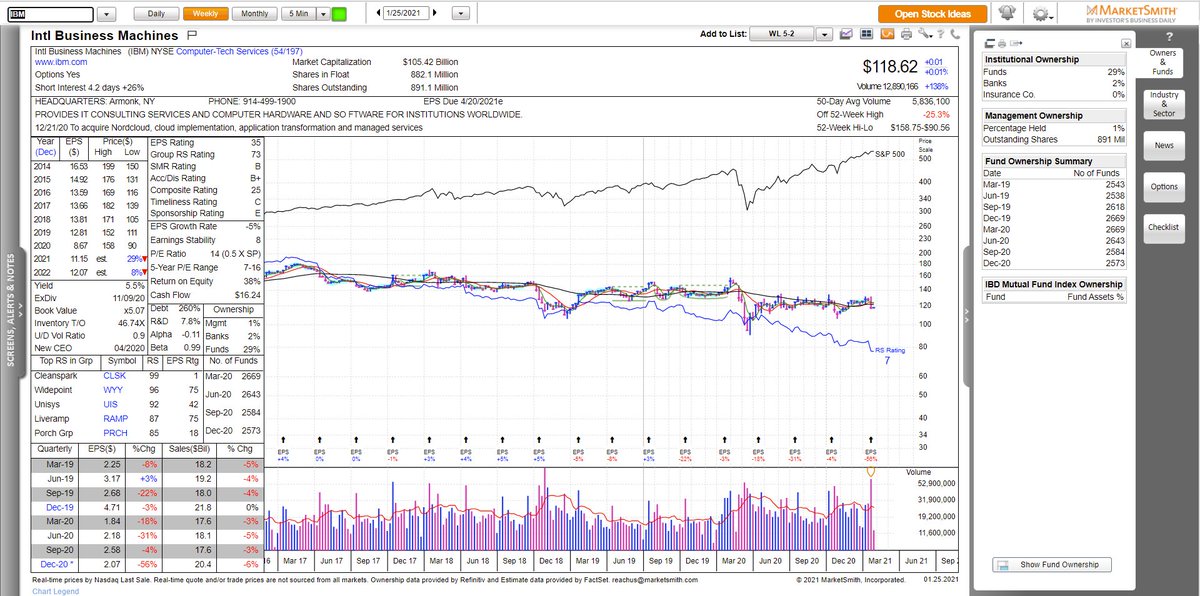
NET is an example
RS rating of 98, ⬆️ RS line and # of funds.
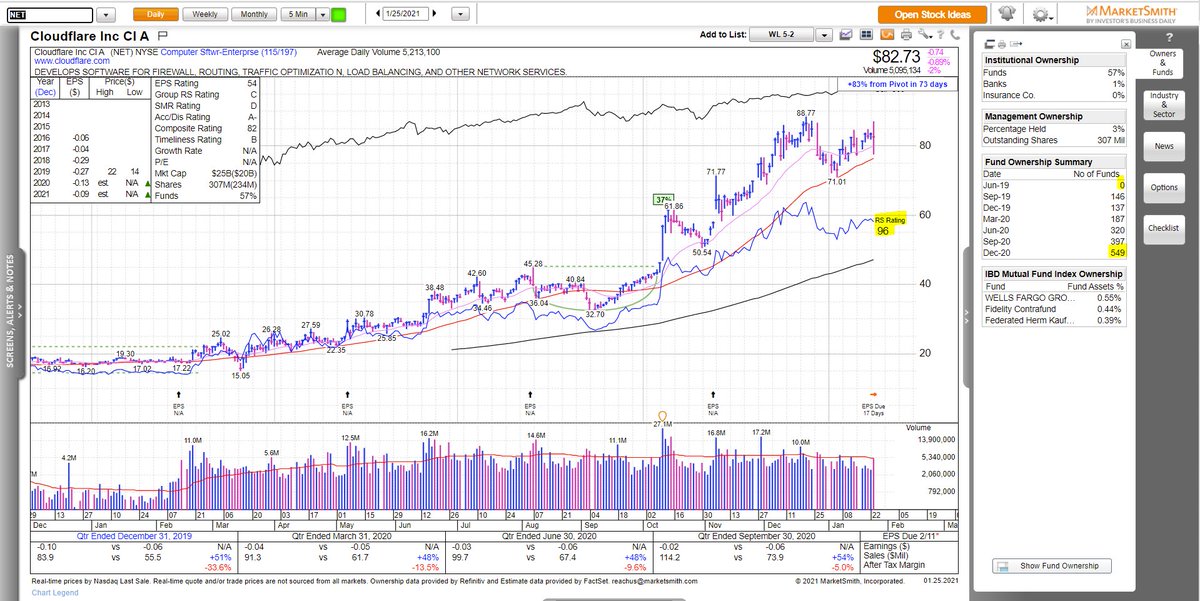
There are many different ways summarized extremely well by @duckman1717 in the document below and I will expand on a couple of these concepts.

Makes a higher Low when the SPX makes a lower one
Stays above 200day SMA while SPX undercuts by 28%
The Leaders often bottom before the indexes
$TSLA increased 800% from this point in 9 months
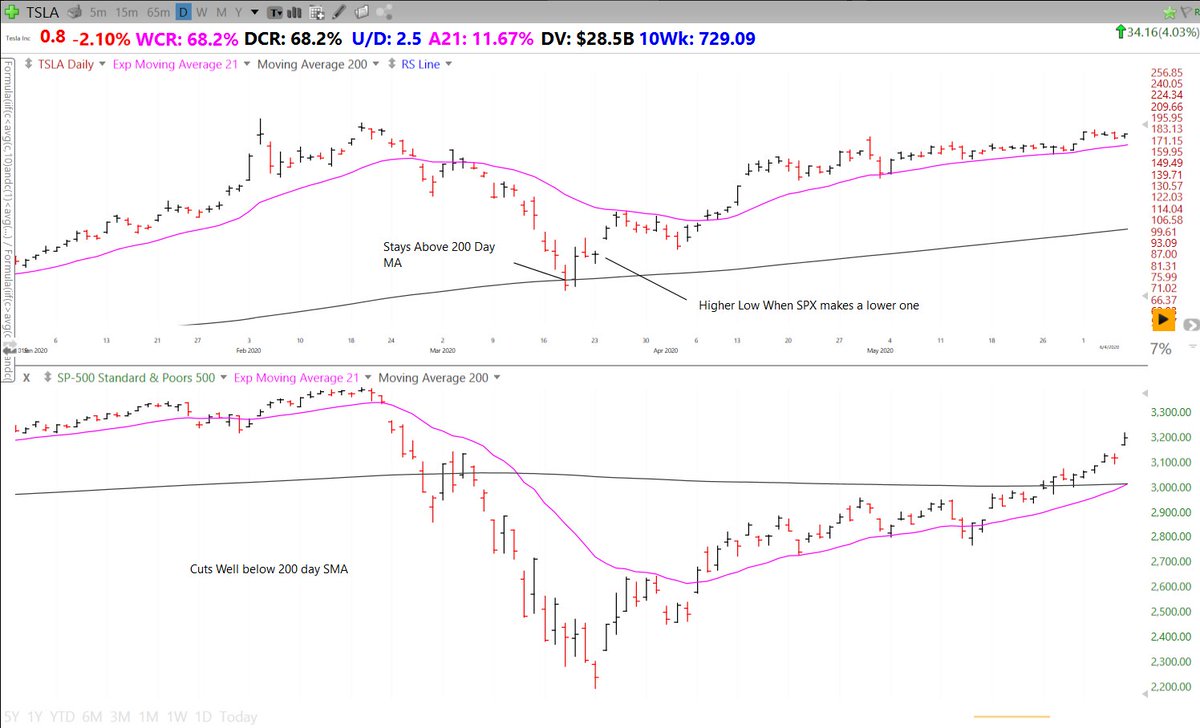
Higher Low again
RS Line hitting new all time highs during correction
Strong bounce once market pressure lifts
Broke out to new all time highs shortly after correction
$DOCU increased 120% in 3 months

Trends above all Key Moving Averages
RS Line in Uptrend
Forms Tight Price areas then breaks out.
Pullbacks are on lower volume than advances
Increased 1000% in 6 months while trending with the 21ema

Breakout on large volume to all time highs
Many up days in a row
Upside reversals near the bottom of price consolidations
Tight price action during correction and right before BO
Increased 100% in 1.5 months from the breakout
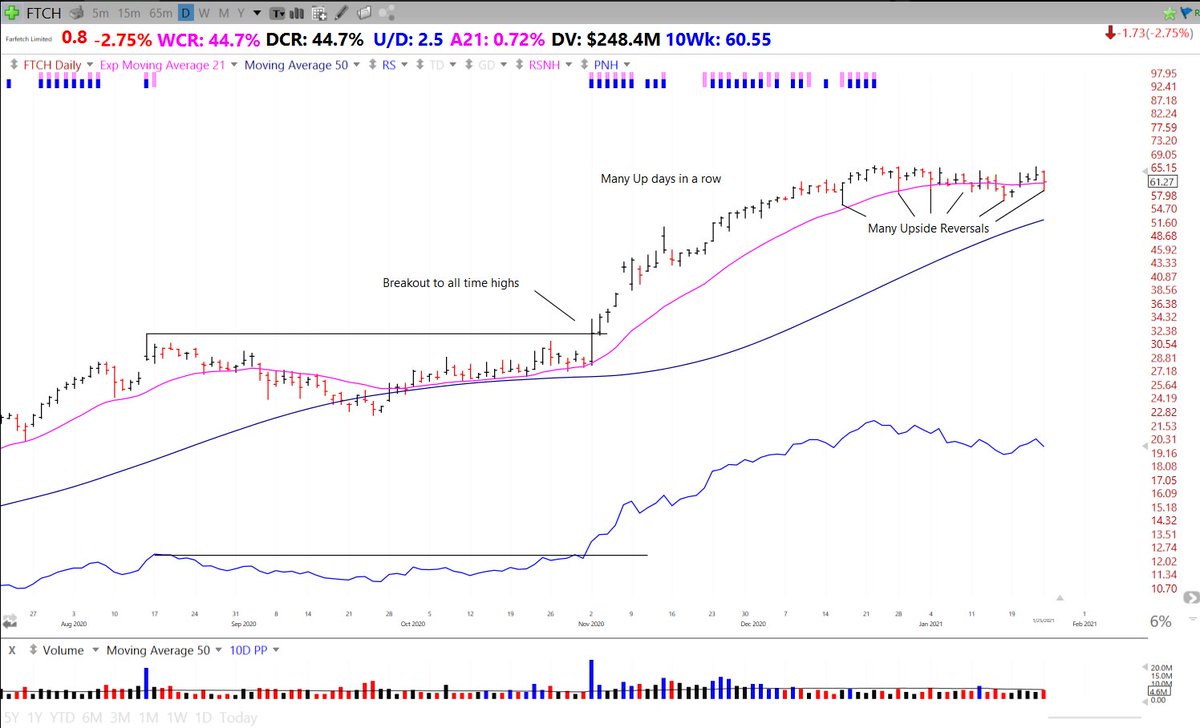
Red to green move on a gap down day
Upside reversal
Prior Uptrend and Volume Contraction within base
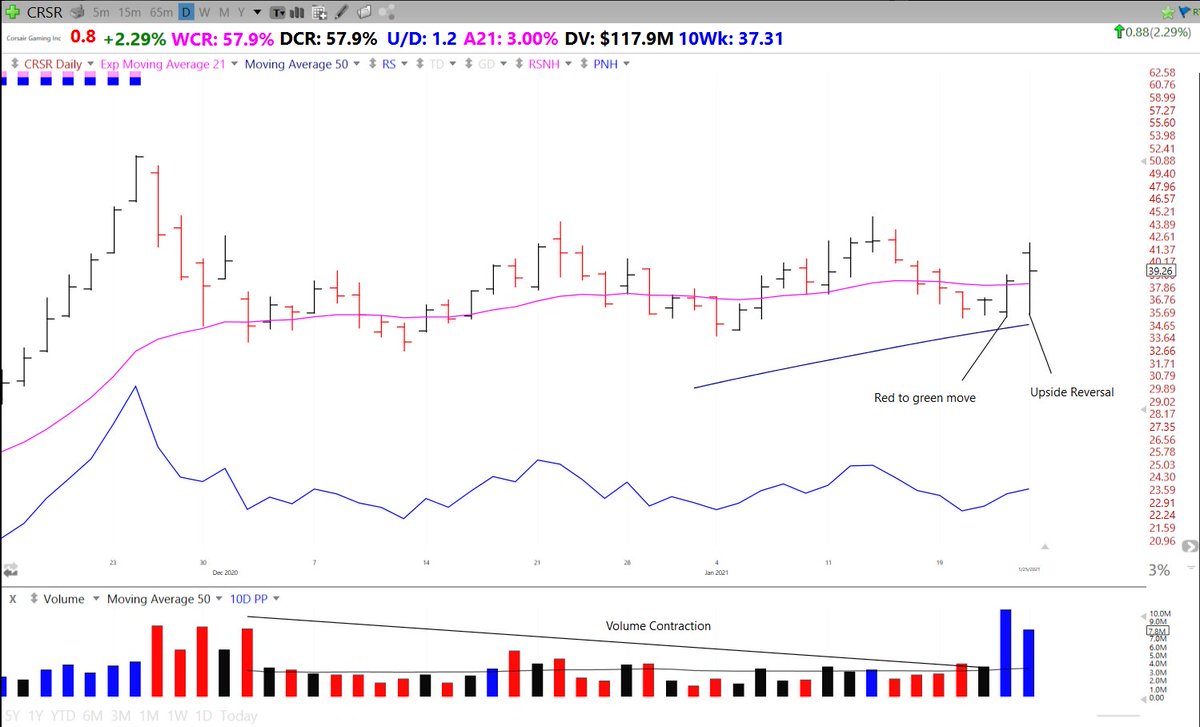
5 minute chart with SPX comparison

For instance:
- Earnings gap ups from Bases on large volume
- Newfound respect for a key moving average
Avoid
- Gap downs on large volume
- Breaking previously respected KMAs

- Red to green moves
- Green on Red days
- High DCR +WCR compared to $SPX
- Closing well off lows
- Tight price action compared to $SPX
- RS line ⬆️
- Pullbacks are on low vol
- Pick stocks with increasing RS Lines + other Signs of RS
- On red days track what is showing RS
- During corrections cut weak stocks first
- During Bear Markets track RS signs- Future Leaders
https://t.co/gCwio1qYWX
What is Relative Strength (RS) and how to identify it (Thread)
— Richard Moglen \U0001f4fd\ufe0f\U0001f981\U0001f6a2 (@RichardMoglen) January 25, 2021
What is an Optimal Buy Point? (thread)
— Richard Moglen \U0001f4fd\ufe0f\U0001f981\U0001f6a2 (@RichardMoglen) August 29, 2020
What is a True Market Leader / TML (Thread)
— Richard Moglen \U0001f4fd\ufe0f\U0001f981\U0001f6a2 (@RichardMoglen) November 6, 2020
(And how to find them)
An Introduction to Price and Volume Action (thread)
— Richard Moglen \U0001f4fd\ufe0f\U0001f981\U0001f6a2 (@RichardMoglen) December 4, 2020
More from Richard Moglen 📽️🦁🚢
The Importance of Trading Rules (Quick thread)
Last week I sent out this poll asking if people have a written
Over 60% of people said they did not have one.
It's now one of my main goals to get as many people as possible to commit to writing their own rules which codify their goals and methods.
I strongly believe that writing down your strategy especially if you are a new trader/investor will lead to improved and more consistent performance in the stock market.
Trading the markets is a tough business, money is on the line and emotions can run high.
Preparing ahead of time is essential so that in the moment you are just executing your plan.
This is the best way to stay in the game for the long haul

Last week I sent out this poll asking if people have a written
Do you have a written Trading/Investing Plan?
— Richard Moglen \U0001f4fd\ufe0f\U0001f981\U0001f6a2 (@RichardMoglen) March 7, 2021
Over 60% of people said they did not have one.
It's now one of my main goals to get as many people as possible to commit to writing their own rules which codify their goals and methods.
I strongly believe that writing down your strategy especially if you are a new trader/investor will lead to improved and more consistent performance in the stock market.
Trading the markets is a tough business, money is on the line and emotions can run high.
Preparing ahead of time is essential so that in the moment you are just executing your plan.
This is the best way to stay in the game for the long haul

More from Traderlion
How to time the market (thread)
There is the old saying that “Time in the market beats timing the market” The chart below from Dr. Wish’s @WishingWealth presentation at the @TraderLion_ conference shows that to be false.
Full presentation: https://t.co/o2f21GBXci
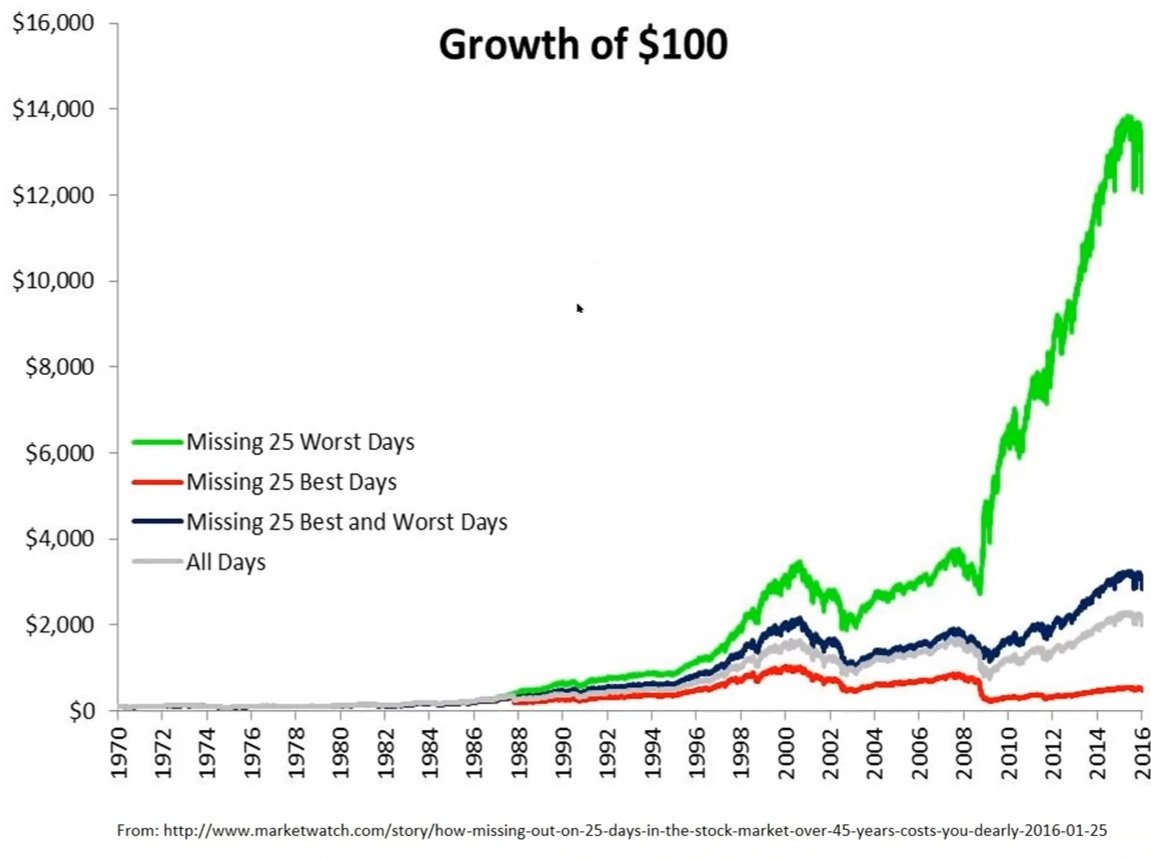
The green line is unattainable realistically, however, missing volatile times during corrections yields better performance than buy and hold and we can aim for the green line.
Investors usually only show the gray and red results.
More
There are many strategies for investing/trading in the stock market operating within different timeframes and with different objectives.
That is of course what creates a market and opportunity. Timing the market may not be what works for you or what fits your goals/lifestyle.
However, everyone involved in the market is here to make money over time and corrections can cause huge drawdowns in the high alpha names negating incredible performance during strong market uptrends.
There is the old saying that “Time in the market beats timing the market” The chart below from Dr. Wish’s @WishingWealth presentation at the @TraderLion_ conference shows that to be false.
Full presentation: https://t.co/o2f21GBXci

The green line is unattainable realistically, however, missing volatile times during corrections yields better performance than buy and hold and we can aim for the green line.
Investors usually only show the gray and red results.
More
There are many strategies for investing/trading in the stock market operating within different timeframes and with different objectives.
That is of course what creates a market and opportunity. Timing the market may not be what works for you or what fits your goals/lifestyle.
However, everyone involved in the market is here to make money over time and corrections can cause huge drawdowns in the high alpha names negating incredible performance during strong market uptrends.
You May Also Like
Trending news of The Rock's daughter Simone Johnson's announcing her new Stage Name is breaking our Versus tool because "Wrestling Name" isn't in our database!
Here's the most useful #Factualist comparison pages #Thread 🧵

What is the difference between “pseudonym” and “stage name?”
Pseudonym means “a fictitious name (more literally, a false name), as those used by writers and movie stars,” while stage name is “the pseudonym of an entertainer.”
https://t.co/hT5XPkTepy #english #wiki #wikidiff
People also found this comparison helpful:
Alias #versus Stage Name: What’s the difference?
Alias means “another name; an assumed name,” while stage name means “the pseudonym of an entertainer.”
https://t.co/Kf7uVKekMd #Etymology #words
Another common #question:
What is the difference between “alias” and “pseudonym?”
As nouns alias means “another name; an assumed name,” while pseudonym means “a fictitious name (more literally, a false name), as those used by writers and movie
Here is a very basic #comparison: "Name versus Stage Name"
As #nouns, the difference is that name means “any nounal word or phrase which indicates a particular person, place, class, or thing,” but stage name means “the pseudonym of an
Here's the most useful #Factualist comparison pages #Thread 🧵

What is the difference between “pseudonym” and “stage name?”
Pseudonym means “a fictitious name (more literally, a false name), as those used by writers and movie stars,” while stage name is “the pseudonym of an entertainer.”
https://t.co/hT5XPkTepy #english #wiki #wikidiff
People also found this comparison helpful:
Alias #versus Stage Name: What’s the difference?
Alias means “another name; an assumed name,” while stage name means “the pseudonym of an entertainer.”
https://t.co/Kf7uVKekMd #Etymology #words
Another common #question:
What is the difference between “alias” and “pseudonym?”
As nouns alias means “another name; an assumed name,” while pseudonym means “a fictitious name (more literally, a false name), as those used by writers and movie
Here is a very basic #comparison: "Name versus Stage Name"
As #nouns, the difference is that name means “any nounal word or phrase which indicates a particular person, place, class, or thing,” but stage name means “the pseudonym of an

